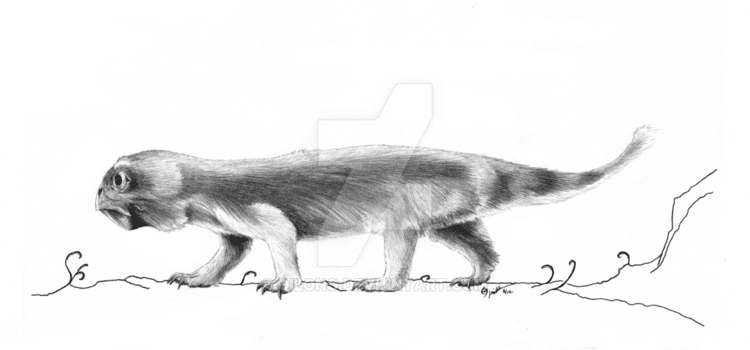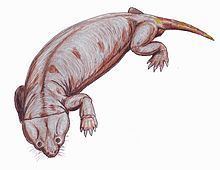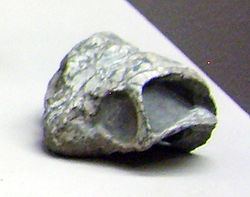Rank Genus | Infraorder †Dicynodontia Phylum Chordata Order Therapsid | |
 | ||
Similar Dicynodon, Therapsid, Endothiodon, Daptocephalus, Oudenodon | ||
Cistecephalus is an extinct genus of dicynodont therapsid from the Late Permian of southern Africa (South Africa and Zambia). It was a small, specialised, burrowing dicynodont, possibly with habits similar to a modern mole. The head was flattened and wedge-shaped, the body long, and the forelimbs very strong, with similarities in structure to the forelimb of modern burrowing mammals.
Contents

It was one of the first genera of dicynodonts to be described, by Richard Owen, in 1876.
Cistecephalus could reach up to 60 centimetres (24 in) in length.
Cistecephalus
Etymology

Cistecephalus is derived from the Greek words κίστη ("box") and κεφαλή ("head"), and was spelled Kistecephalus until emended by Richard Lydekker in 1890. The name is a reference to the boxy shape of its skull.
Description

Cistecephalus was one of the most atypical dicynodont genera. However, it was broadly similar in anatomy to other cistecephalids, all of which share similar adaptations to digging. Its skull was broad, with laterally-directed temporal openings and a sharply tapering snout, similar to extant fossorial animals. However, it has relatively large, anteriorly-directed orbits, suggesting binocular vision. It had a short neck and laterally-directed shoulder joint. Its forelimbs were short and powerfully built, and its manus were broad, with fused phalanges. Its hind limbs were flexible and probably could be used to move dirt out of the way.
History
Cistecephalus was one of the first dicynodont genera named, and it has had numerous species assigned to it, but only the type species is considered valid today. Most of these invalid species were incorrectly identified as distinct due to taphonomic differences as well as ontogenetic change and sexual dimorphism. The biology of Cistecephalus has been interpreted in various ways, due to its rather unusual morphology. Both aquatic and arboreal lifestyles have been suggested, but since 1978, the consensus has been that it was fossorial. Some fossils of a cistecephalid from the Kundaram Formation of India were regarded as belonging to Cistecephalus, but have since been assigned to a separate genus, Sauroscaptor.
Species
Cistecephalus has had many species assigned to it, most of which are now considered junior synonyms of the type species. Richard Owen named six species when he erected the genus in 1876, of which C. microrhinus is considered the type.
Classification
Cistecephalus is the type genus of Cistecephalidae, a clade of emydopoid dicynodonts known from southern Africa and India. Cistecephalids are among the most strongly-supported clades within Dicynodontia.
Cladogram showing the phylogenetic position of Cistecephalus.
Provenance
Cistecephalus appears to have been endemic to the Karoo Basin of South Africa. It is most common in the Cistecephalus Assemblage Zone, in which it dominates the fauna, and is also found in the slightly older Tropidostoma Assemblage Zone.
